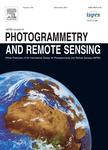版权所有:内蒙古大学图书馆 技术提供:维普资讯• 智图
内蒙古自治区呼和浩特市赛罕区大学西街235号 邮编: 010021

作者机构:Chinese Acad Sci Aerosp Informat Res Inst Key Lab Digital Earth Sci 9 Dengshuang South Rd Beijing 100094 Peoples R China Univ Chinese Acad Sci Beijing 100049 Peoples R China Chinese Acad Sci Aerosp Informat Res Inst State Key Lab Remote Sensing Sci Beijing 100101 Peoples R China Chinese Acad Sci Aerosp Informat Res Inst Hainan Key Lab Earth Observat Sanya 572029 Peoples R China
出 版 物:《ISPRS JOURNAL OF PHOTOGRAMMETRY AND REMOTE SENSING》 (国际摄影测量和遥感学会志)
年 卷 期:2020年第162卷第0期
页 面:137-147页
核心收录:
学科分类:1002[医学-临床医学] 070801[理学-固体地球物理学] 07[理学] 08[工学] 0708[理学-地球物理学] 0705[理学-地理学] 0816[工学-测绘科学与技术]
基 金:National Key R&D Program of China [2017YFE0100800] National Natural Science Foundation of China International Partnership Program of the Chinese Academy of Sciences [131551KYSB20160002/131211KYSB20170046]
主 题:Segmentation algorithms Distributed algorithms Image processing GeoTrellis Spark
摘 要:Image segmentation is essential in object-based image analysis. Numerous image segmentation algorithms have been proposed and widely applied to process remote sensing images, but most of them are designed to deal with single scenes. As the volume of images grows rapidly, handling images with single machines is becoming increasingly difficult, and the size of a composite image can be larger than the CPU memory of a single computer. To address this problem, a distributed image segmentation strategy is proposed in this paper. The two main steps of the proposed strategy are as follows. First, a prepared massive image is loaded and then decomposed into sub-images that are distributed across multiple computers;algorithms are then used in parallel to segment each sub-image into a large number of initial objects. Secondly, the proposed object resegmentation method is applied to the initial boundary objects in each sub-image in order to merge these objects. The sub-images are then ingested from the different computers in order to obtain the final segmentation image. Two classical segmentation algorithms are employed to test the proposed strategy in eight different study areas that include urban area, suburban zone and agricultural landscape. Both the intersection over union and the F-measure metrics show that the proposed strategy can help to solve the problem of the data volume being too large to fit on a single machine, and that it also performs better than comparative strategies. The proposed strategy not only has the ability to segment very large images, but also accelerates the segmentation and segmentation-based applications so that they can match the image acquisition rate.